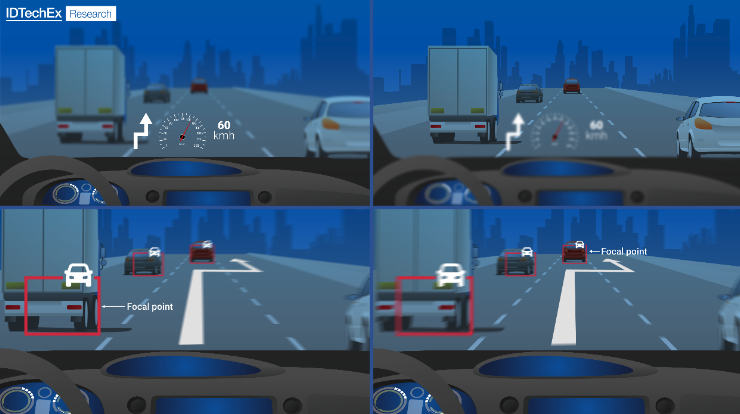Automotive heads-up displays are a recent fad that has been well received.
With technology becoming faster more reliable, the use and acceptance of technology while driving is fast becoming a go-to as drivers demand more convenience on their commute.
No ad to show here.
Several companies and research groups are therefore evaluating the use of 3D display technologies such as holography and LFDs.
Holography, in particular, appears to be gaining more attraction when applied to automotive heads-up displays (HUDs), and there are some notable reasons for this increased interest.
The first was addressed earlier and relates to its ability to project virtual images with true depth cues and without a loss in resolution.
The driver experience is significantly more comfortable when road obstacles are signaled by images that have depth. Much like our everyday vision, we are able to seamlessly focus and defocus on virtual objects, something that is not easily achievable using 2D technologies.
The varying depth cues offer a more comfortable driving experience for the driver and can become more helpful with signaling road obstacles that naturally have varying depths.
A display technology that works well under varied ambient conditions is essential, as key information must be visible in very bright or dark conditions. CGH uses a coherent light source, and this is most often a laser. Lasers are naturally very bright and perform consistently under a wide range of ambient light environments.
Companies specializing in holographic HUDs are focusing on two key areas to compete with the dominant TFT-LCD technology: lowering the cost of these devices and reducing their form factor. Currently, larger form factors and increased cost mean these devices are only suitable for larger, more expensive vehicles, also known as premium vehicles. In order to become more competitive in this market and benefit from the large market potential, cost and form factors must decrease.
While holographic technology is considered suitable for automotive HUDs, the comparatively poorer image quality when compared to LCDs and OLEDs, mainly due to an effect known as speckle, means that it requires further maturity to be adopted in other applications in the long term.
IDTechEx’s “Automotive Heads-up Displays 2024-2034: Technologies, Players, Opportunities” report analyses the main technologies and HUD types being developed and expected to grow over the next decade. The challenge in developing automotive HUDs is more than just ensuring the technology works accordingly; it must comply with the very stringent regulations the sector demands. This report covers key innovations in manufacturing as well as coating requirements to enhance the performance of HUDs.
Also read: MTN introduces MTN Play Kids educational subscription service
